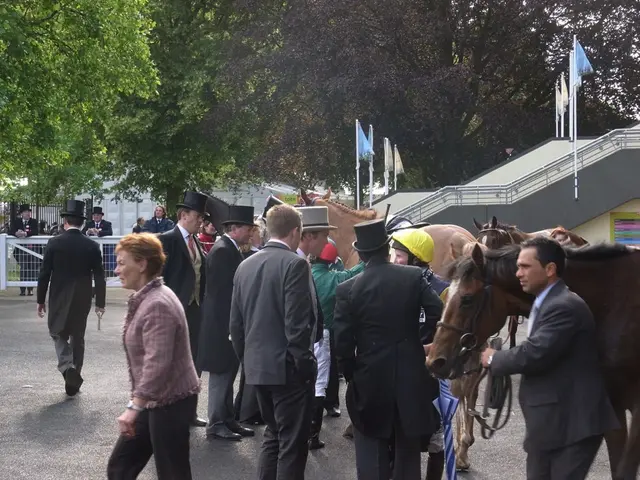The Fascination Surrounding Couples' Portrayal of Fictional Criminal Activities
Criminal Couples in Literature: The Triumph of Darkness Through a Tangled Web of Love and Guilt
A fascinating exploration of human nature and the twisted dynamics of romance unfolds in literature when a pair of lovers engage in criminal acts, transcending the boundaries of traditional crime fiction. The seemingly paradoxical pairing of love and destruction generates a unique and compelling narrative perspective.
In the recently released thriller, The Marriage Rule, by Helen Monks Takhar, the central couple, Elle and Dom, initially appear to be the epitome of conjugal bliss. However, the sinister undercurrents that courses through their relationship reveals a far darker truth. According to Takhar, a married couple, or a marriage itself, can either conceal crimes from public scrutiny or provide a sanctuary where wrongdoings flourish undetected.
This idea is reminiscent of the literary archetype found in Shakespeare’s Macbeth, where Lady Macbeth stokes her husband's dark ambitions and propels him towards a murderous spree. The couple's transgressions in fiction have long served to amplify misdeeds, making them more subversive when committed by a dual perpetrator. As the author states, a single culprit's crimes seem benign in comparison to the collective darkness wrought by romantic partnerships.
Millicent and her husband, in Samantha Downing's gripping 2019 thriller My Lovely Wife, provide a compelling example of this phenomenon. Millicent, the dominant force within their union, orchestrates a series of murders with her husband serving as the unwitting accomplice. The narrative crackles with the couple’s malevolent energy, as they callously select their victims and the husband recounts the chilling inception of their partnership.
The seemingly idyllic small-town couple, Carl and Sandy Henderson in Donald Ray Pollock's The Devil All The Time, also engage in a brutal killing spree. Their perverse relationship is closely intertwined with the sinister undercurrents of post-war, rural Ohio, providing a profoundly grim backdrop to the couple’s grim deeds.
However, it is not only murder that couples may mask more effectively than a single protagonist. In Kia Abdullah's Those People Next Door/Perfectly Nice Neighbors, the passive aggression and racism of the White English couple, Tom and Willa, serve as the catalyst for a volatile neighborhood dispute. Their intolerance and hostility towards their Black British Bangladeshi neighbors escalate events, demonstrating how a relationship that enables rather than checks a partner’s unsavory traits can facilitate and justify wrongdoings.
While the couples’ sinister partnership may appear to offer a more shocking portrait of human vice, Sarah Waters' Fingersmith presents a different take. Sue and Maud, the pawns in an elaborate double-crossing scheme, transgress societal norms by falling in love in the context of the era. The duo’s misdeed, in this case, is an illicit romance within the confines of 19th-century Victorian London.
By delving into the complex psychological dynamics that arise when couples commit crimes together, literature provides a captivating and nuanced exploration of human nature, moral complexities, and the forces that compel individuals to engage in criminal activities.
In the captivating world of contemporary literature, the novel The Marriage Rule by Helen Monks Takhar showcases the intricate relationship between lifestyle, relationships, and entertainment, as the story unfolds around a seemingly perfect couple whose shared interests include books and entertainment, yet their hidden transgressions reveal a darker side.
Millicent and her husband in Samantha Downing's My Lovely Wife also highlight the intersection of literature, relationships, and entertainment, as their love for books and shared interest in entertainment serves as a facade for their malevolent relationship and criminal acts.







